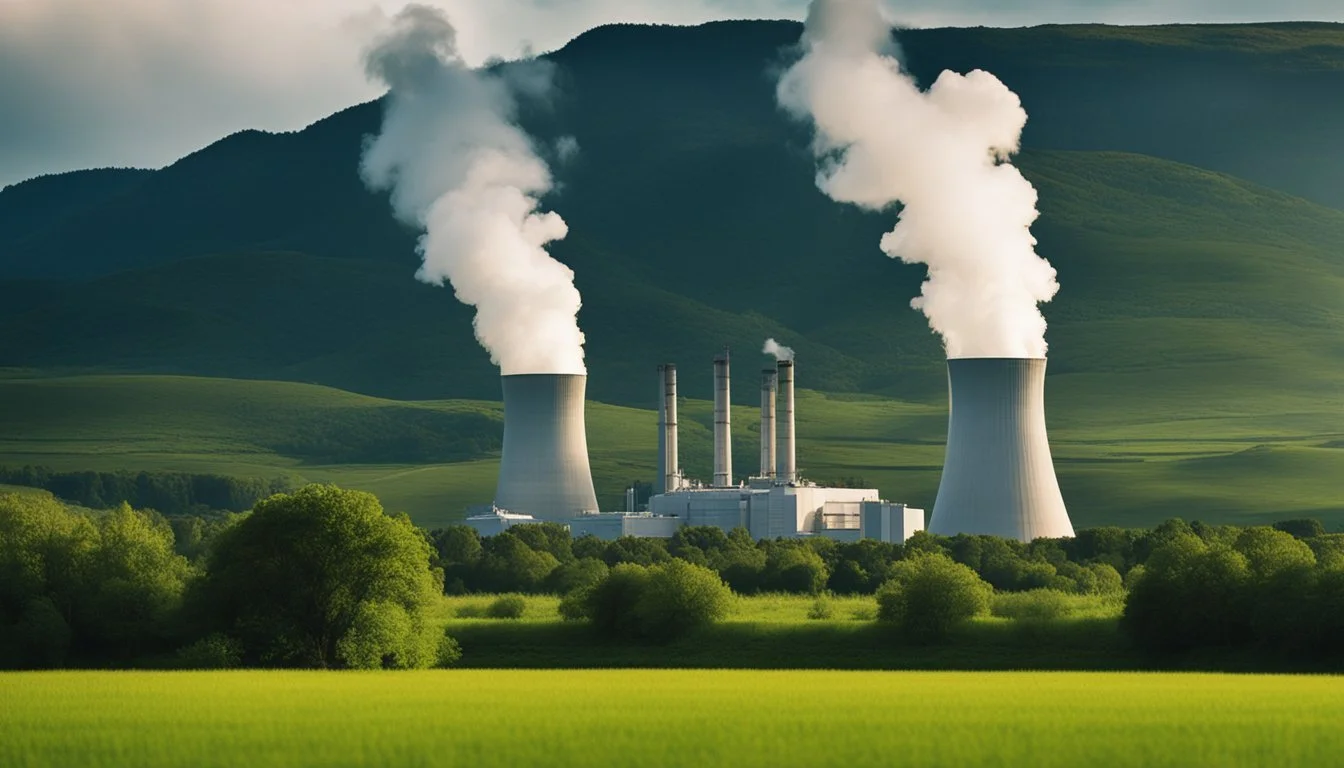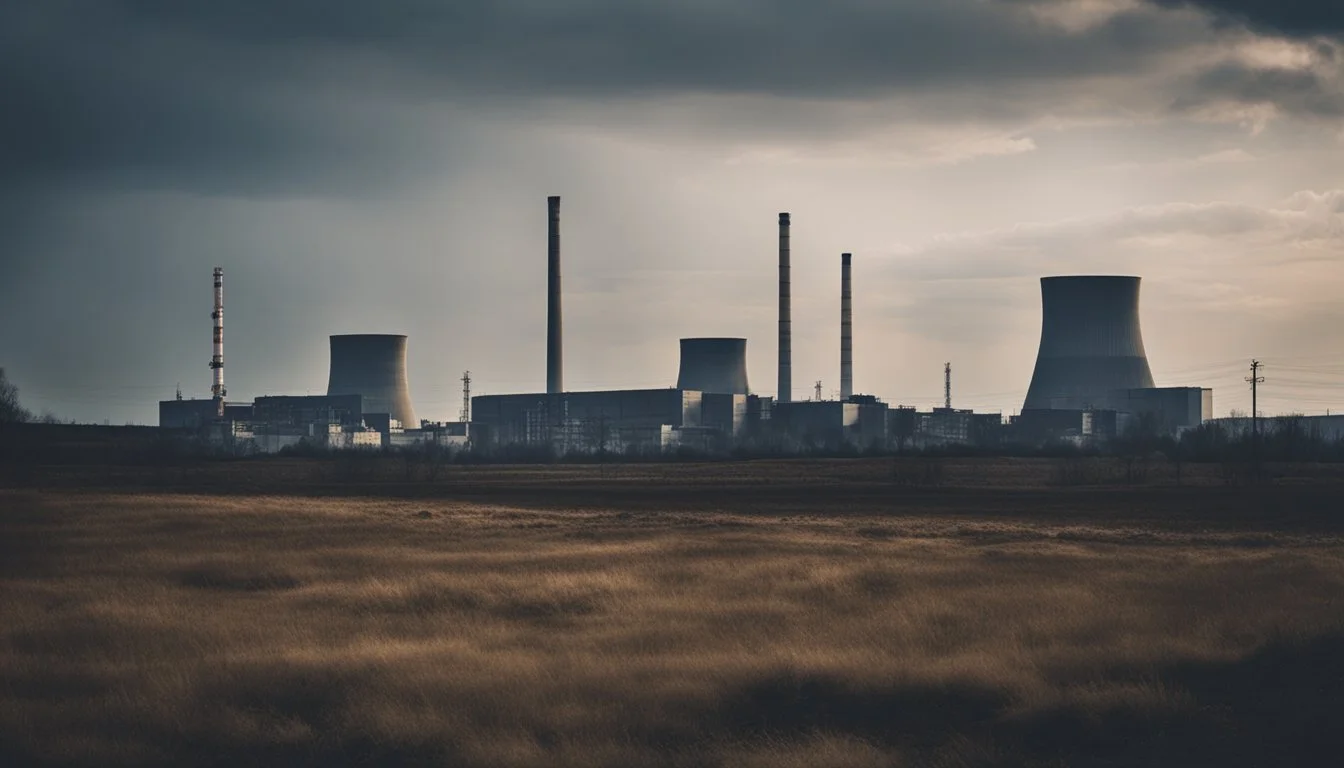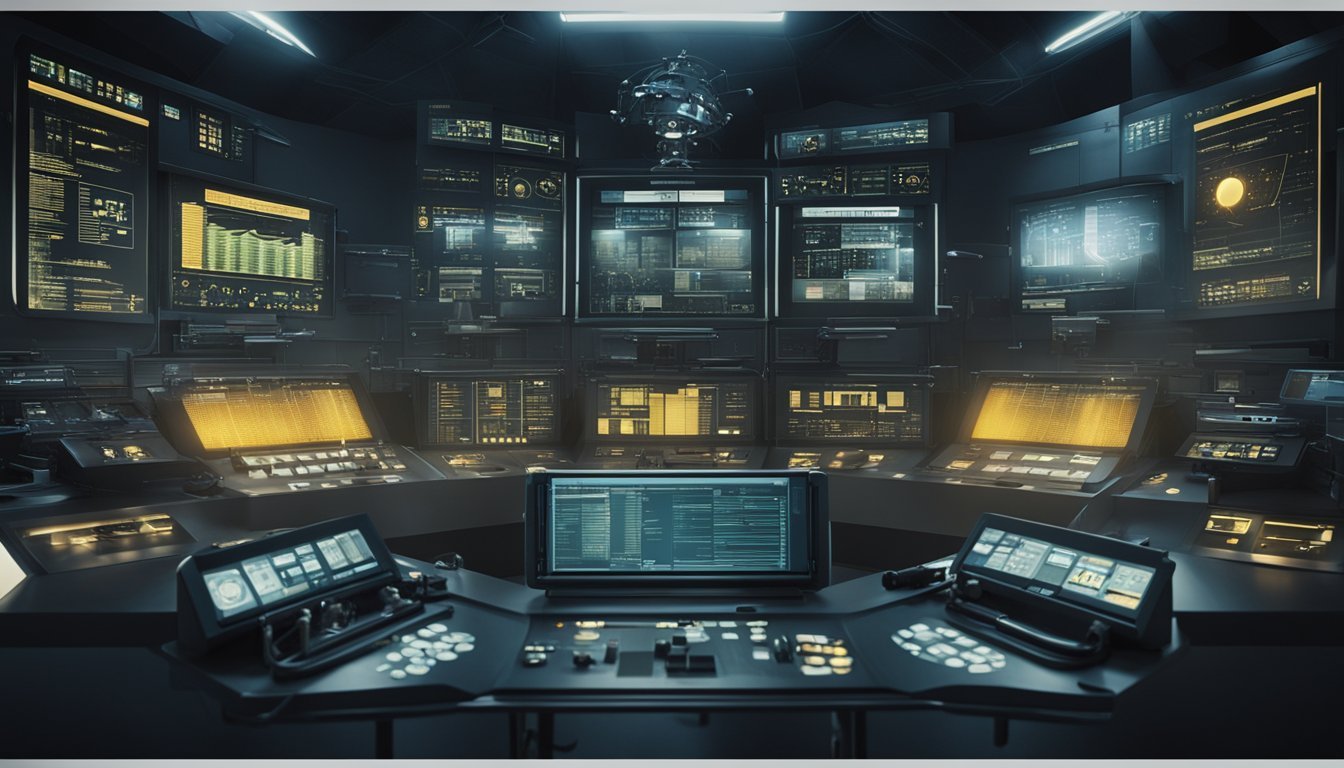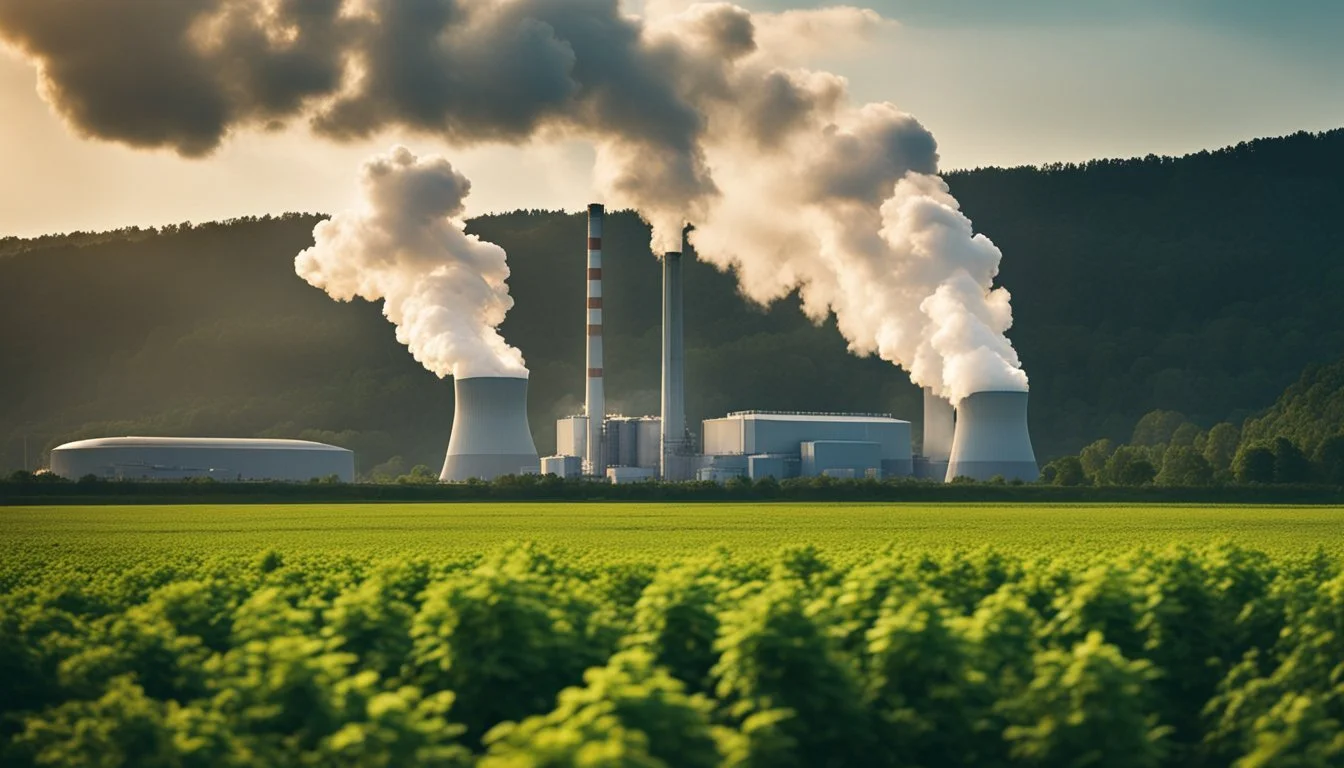8 Nuclear Documentaries That Will Split Your Mind
Explosive Insights into Atomic Power
Nuclear documentaries offer a unique window into the complex world of atomic energy and its far-reaching impacts. From the dawn of the nuclear age to modern debates about clean energy, these films explore the scientific, historical, and ethical dimensions of nuclear power.
These documentaries provide viewers with thought-provoking insights into the development, use, and ongoing controversies surrounding nuclear technology. They cover a range of topics, including the Manhattan Project, atomic bomb tests, nuclear accidents, and the potential role of nuclear energy in addressing climate change. By presenting expert interviews, archival footage, and compelling narratives, these films challenge audiences to grapple with the profound implications of harnessing the atom's power.
1) The Bomb (2015)
The Bomb offers a comprehensive look at the history and impact of nuclear weapons. This PBS documentary explores the scientific breakthroughs that led to the atomic bomb's creation during World War II.
Directed by Rushmore DeNooyer, the film covers the Manhattan Project and the race to develop nuclear technology before Nazi Germany. It examines the ethical dilemmas faced by scientists and policymakers involved in the project.
The documentary uses archival footage and expert interviews to trace nuclear proliferation through the Cold War. It highlights key moments like the Cuban Missile Crisis and arms reduction treaties between superpowers.
The Bomb also addresses contemporary nuclear threats and the ongoing debate about these weapons' role in global security. Its clear, factual approach provides viewers with a solid foundation for understanding this complex topic.
More information on The Bomb (2015)
2) Command and Control (2016)
"Command and Control" is a gripping documentary that explores a near-catastrophic incident at a nuclear missile silo in Arkansas in 1980. Directed by Robert Kenner, the film is based on Eric Schlosser's book of the same name.
The documentary recounts the events surrounding the accidental drop of a socket wrench at Titan II Missile Complex 374-7. This simple mishap led to a fuel leak that threatened to detonate a nuclear warhead.
Through interviews with Air Force personnel and archival footage, the film paints a tense picture of the 9-hour struggle to prevent disaster. It highlights the precarious nature of nuclear weapons systems and the potential for human error.
"Command and Control" serves as a stark reminder of the dangers posed by nuclear arsenals. It raises important questions about the safety protocols and decision-making processes involved in managing these weapons.
The documentary received critical acclaim for its suspenseful storytelling and thorough examination of a little-known historical event. It offers viewers a rare glimpse into the high-stakes world of nuclear weapons management.
3) Pandora's Promise (2013)
Pandora's Promise challenges conventional environmentalist views on nuclear energy. Directed by Robert Stone, this documentary follows the journeys of several prominent environmentalists who have reconsidered their stance on nuclear power.
The film argues that nuclear energy is a safe and clean alternative that could help combat climate change. It features interviews with former anti-nuclear activists who now advocate for nuclear power as a solution to global warming.
Pandora's Promise explores nuclear accidents like Three Mile Island and Chernobyl, providing context and comparing nuclear energy's risks to those of fossil fuels. The documentary also addresses common concerns about nuclear waste and weapons proliferation.
Critics praised the film for sparking debate, while some environmentalists criticized its pro-nuclear stance. Pandora's Promise sparked discussions about the role of nuclear energy in a sustainable future.
4) Nuclear Nation (2012)
Nuclear Nation offers a sobering look at the aftermath of the Fukushima Daiichi nuclear disaster. Directed by Atsushi Funahashi, this documentary follows the residents of Futaba, a town that housed the ill-fated power plant.
The film chronicles the lives of nuclear refugees displaced by the 2011 tsunami and subsequent meltdown. It provides an intimate portrayal of their struggles as they grapple with loss and uncertainty.
Funahashi's camera captures poignant moments in evacuation centers and temporary housing. The documentary highlights the human cost of nuclear energy and raises questions about its long-term impacts on communities.
Nuclear Nation received critical acclaim for its unflinching examination of a complex issue. It offers viewers a chance to witness firsthand the consequences of nuclear accidents on ordinary citizens.
Learn more about Nuclear Nation on IMDb
5) The Atomic Cafe (1982)
The Atomic Cafe is a groundbreaking documentary that uses archival footage to explore America's nuclear anxieties during the Cold War era. Directors Kevin Rafferty, Jayne Loader, and Pierce Rafferty compiled clips from government propaganda films, newsreels, and military training videos.
The film presents these materials without narration, allowing viewers to draw their own conclusions about the absurdity of nuclear warfare rhetoric. It showcases how authorities attempted to normalize the threat of atomic bombs through public information campaigns.
The Atomic Cafe employs dark humor to highlight the contradictions in official messaging about nuclear safety. It juxtaposes cheerful educational cartoons with stark images of bomb tests and their aftermath.
This documentary offers a unique perspective on a pivotal period in American history. It reveals how fear and misinformation shaped public perception of nuclear weapons during the 1940s and 1950s.
The Atomic Cafe remains a powerful critique of government propaganda and the nuclear arms race. Its innovative approach to documentary filmmaking continues to influence creators today.
More information on The Atomic Cafe
6) The Day After Trinity (1981)
This documentary explores the development of the first atomic bomb and its chief architect, J. Robert Oppenheimer. Directed by Jon Else, it features interviews with scientists and witnesses involved in the Manhattan Project.
The film takes viewers through Oppenheimer's journey, from his leadership role in the bomb's creation to his later advocacy against nuclear proliferation. It offers unique insights into the moral dilemmas faced by those involved in the project.
At the heart of the documentary is the Trinity test, the first-ever nuclear explosion conducted in New Mexico on July 16, 1945. The film examines the scientific achievements and ethical implications of this pivotal moment in history.
Through archival footage and firsthand accounts, "The Day After Trinity" provides a compelling look at the human story behind one of the most significant technological advancements of the 20th century.
7) Countdown to Zero (2010)
Countdown to Zero examines the ongoing threat of nuclear weapons in the modern world. Directed by Lucy Walker, this documentary traces the history of atomic bombs from their creation to present-day proliferation risks.
The film features interviews with world leaders, scientists, and policy experts. It explores the dangers of nuclear accidents, terrorism, and the potential for global catastrophe.
Countdown to Zero highlights the urgency of nuclear disarmament efforts. It presents sobering facts about the current nuclear arsenal and the ease with which weapons-grade materials can be obtained.
The documentary received praise for its clear explanation of complex issues. It aimed to raise public awareness and encourage action towards nuclear abolition.
Countdown to Zero premiered at the 2010 Sundance Film Festival. It was produced by Lawrence Bender, known for his work on An Inconvenient Truth.
More information on Countdown to Zero (2010)
8) Into Eternity (2010)
"Into Eternity" explores the construction of Onkalo, a nuclear waste repository in Finland. This underground facility is designed to safely store radioactive material for 100,000 years.
Director Michael Madsen examines the scientific and philosophical challenges of long-term nuclear waste storage. The film raises thought-provoking questions about how to warn future generations of the site's dangers.
Onkalo's design includes copper canisters to contain the waste. The documentary investigates the potential risks and uncertainties associated with this storage method over millennia.
Structured as a message to the future, "Into Eternity" contemplates the ethics of nuclear energy and its long-lasting impact on the planet. It highlights the complex task of communicating crucial information across vast timescales.
The film offers a unique perspective on humanity's responsibility to address the consequences of nuclear power for countless future generations.
The History of Nuclear Energy
Nuclear energy's history spans over a century of scientific breakthroughs and technological advances. Key milestones include early atomic discoveries, wartime research, and the development of civilian power applications.
Early Discoveries and Innovations
The foundation for nuclear energy was laid in the early 20th century. In 1895, Wilhelm Röntgen discovered X-rays, sparking interest in radioactivity. Marie and Pierre Curie isolated radium in 1898, furthering understanding of radioactive elements.
Ernest Rutherford's 1911 atomic model provided crucial insights into nuclear structure. In 1932, James Chadwick discovered the neutron, a pivotal component in nuclear reactions.
The breakthrough came in 1938 when Otto Hahn and Fritz Strassmann achieved uranium fission. Lise Meitner and Otto Frisch explained the process theoretically, setting the stage for future developments.
Development During World War II
World War II accelerated nuclear research dramatically. The Manhattan Project, launched in 1942, brought together top scientists to develop atomic weapons.
Enrico Fermi achieved the first controlled nuclear chain reaction in 1942 at the University of Chicago. This milestone proved the feasibility of harnessing nuclear energy.
The project culminated in the creation and use of atomic bombs in 1945. Post-war, focus shifted to peaceful applications of nuclear technology.
In 1951, the EBR-I reactor in Idaho became the first to generate electricity from nuclear power. This paved the way for commercial nuclear energy production in subsequent decades.
Environmental and Health Impacts of Nuclear Energy
Nuclear energy's environmental and health effects are complex and multifaceted. Key areas of concern include radiation exposure, waste management, and impacts on wildlife and ecosystems.
Radiation Exposure
Radiation exposure from nuclear power plants during normal operation is minimal. Workers in nuclear facilities receive carefully monitored doses within regulatory limits. The public living near plants typically experiences less radiation than from natural background sources.
However, accidents can release harmful levels of radiation. The Chernobyl disaster in 1986 caused widespread contamination and increased cancer rates in affected areas. The Fukushima incident in 2011 led to evacuations and ongoing decontamination efforts.
Long-term health effects of low-level radiation exposure remain debated among scientists. Some studies suggest increased cancer risks, while others find no significant impacts.
Nuclear Waste Management
Radioactive waste from nuclear power plants poses long-term storage challenges. High-level waste, including spent fuel rods, remains dangerous for thousands of years.
Current storage methods include:
Cooling pools at reactor sites
Dry cask storage in reinforced containers
Deep geological repositories (proposed)
No country has yet implemented a permanent solution for high-level waste disposal. Technical and political obstacles have delayed projects like Yucca Mountain in the United States.
Low-level waste, such as contaminated equipment, is typically stored in near-surface facilities. These require ongoing monitoring and maintenance to prevent environmental contamination.
Impact on Wildlife and Ecosystems
Nuclear power plants can affect local ecosystems in several ways:
Thermal pollution from cooling water discharge
Fish and wildlife entrainment in cooling systems
Habitat disruption from plant construction and operation
Some studies have found reduced biodiversity near nuclear facilities. Others report minimal long-term impacts when proper environmental controls are in place.
Uranium mining for fuel production can cause significant environmental damage. Open-pit mines disrupt landscapes and may contaminate soil and water sources. In-situ leaching methods can affect groundwater quality.
Radiation releases from accidents have caused documented harm to plants and animals in affected areas. The Chernobyl Exclusion Zone, for example, shows both negative effects and unexpected biodiversity increases due to reduced human presence.
Public Perception and Nuclear Energy
Public opinion on nuclear energy has fluctuated over time, shaped by media coverage and political discourse. Safety concerns and environmental impacts remain key factors influencing public attitudes.
Media Influence
News coverage and documentaries play a significant role in shaping public perception of nuclear energy. Films like "Pandora's Promise" challenge anti-nuclear views by showcasing environmentalists who have become nuclear advocates. These documentaries highlight nuclear power's potential as a low-carbon energy source.
Media reporting on nuclear accidents, such as Chernobyl and Fukushima, has heightened public fears. However, balanced coverage of nuclear technology's advancements and safety improvements can help counter misconceptions.
Social media and online platforms have become important channels for disseminating information about nuclear energy. These platforms allow for rapid spread of both factual data and misinformation, influencing public opinion in real-time.
Political Debates
Nuclear energy policy often sparks heated political debates. Proponents argue for its role in combating climate change and ensuring energy security. Critics raise concerns about waste management and proliferation risks.
Political stances on nuclear energy can vary widely between and within countries. Some nations are phasing out nuclear power, while others are expanding their programs.
Public hearings and community engagement initiatives play crucial roles in nuclear project approvals. Local concerns about property values and environmental impacts often shape these discussions.
Policymakers must navigate complex technical, economic, and safety considerations when making decisions about nuclear energy. Public opinion can significantly influence these political choices, affecting long-term energy strategies.







